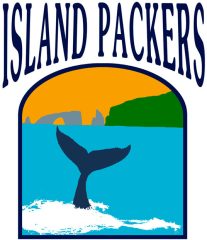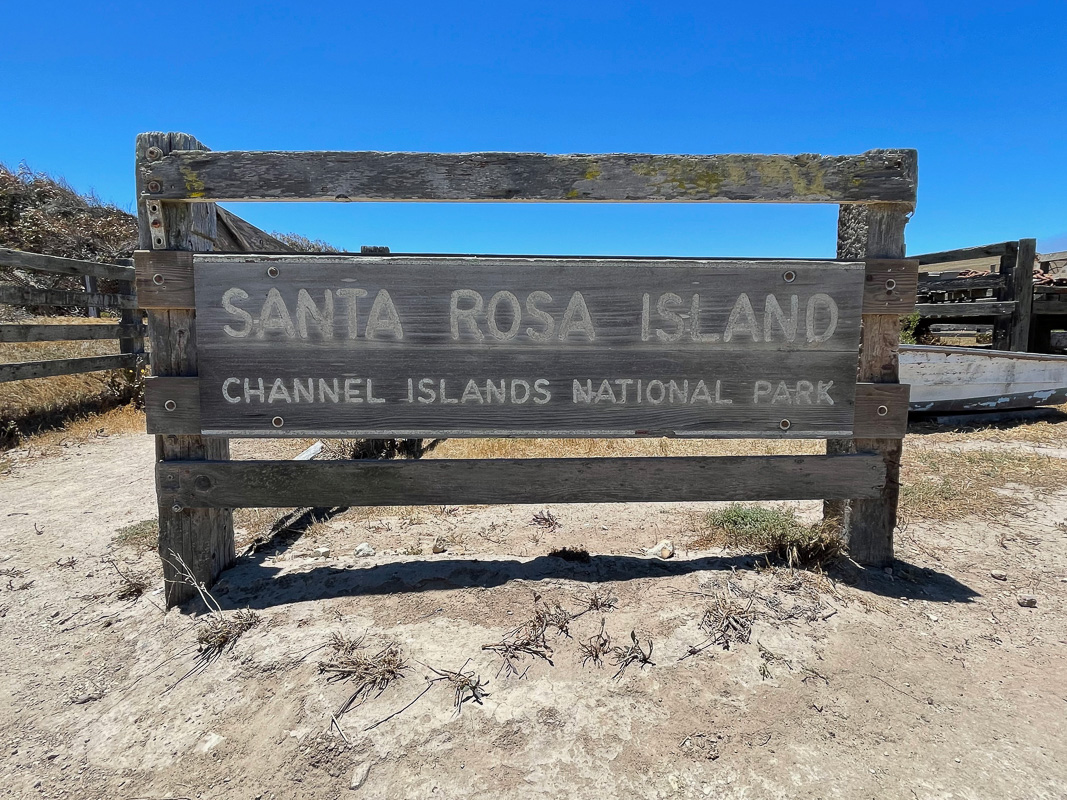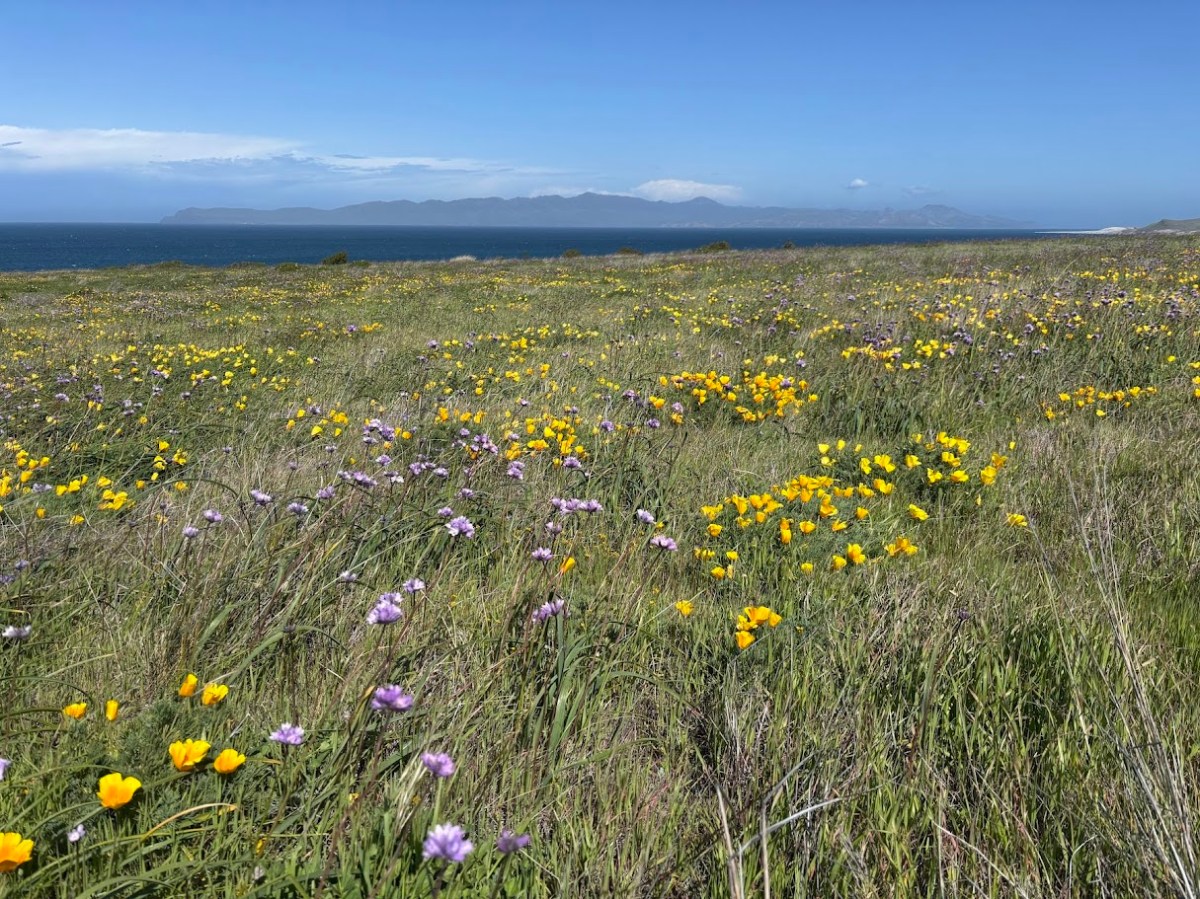ABOUT SANTA ROSA ISLAND
Explore Santa Rosa Island
As the second-largest of the Channel Islands at 84 square miles, Santa Rosa Island offers a breathtaking mix of rugged peaks, rolling grasslands, and pristine coastal wilderness.
Island Features:
✔ Towering Peaks: Summit Soledad Peak (1,574 ft) and Black Mountain (1,298 ft) for panoramic ocean views
✔ Diverse Landscapes: Hike through golden hills, deep canyons like Lobo Canyon, and stunning white-sand beaches
✔ Trail Network: Explore miles of scenic paths ranging from coastal strolls to challenging canyon treks
Unique Ecosystems:
Rare Torrey pines in one of only two native groves worldwide
Critical habitat for island foxes and other endemic species
Dramatic sea cliffs and secluded coves along the shoreline
With its varied terrain and exceptional solitude, Santa Rosa Island promises an unforgettable Channel Islands adventure for hikers and nature lovers alike.
Visitor Note:
Access to the island’s full beauty requires moderate to strenuous hiking ability, with some trails featuring significant elevation changes.
Spring Blooms on Santa Rosa Island (April-May)
In spring, Santa Rosa Island transforms into a vibrant landscape of green grasslands and colorful native wildflowers. For the best wildflower viewing, hike the scenic Cherry Canyon Trail—or, if you’re camping, don’t miss the blooms at Carrington Point.
The intensity and duration of the bloom vary each year, depending on rainfall and temperature patterns. No two springs are exactly alike, so each visit offers a unique display of nature’s beauty.
Plan your trip and witness the island’s breathtaking seasonal transformation!
All trips returning from Santa Rosa Island stop by to see the Painted Cave on Santa Cruz Island. If sea conditions allow, the boat may enter the cave and visitors will experience one of the world’s largest sea caves from the inside out. For many, this event is a major highlight of their day and is free of charge on Santa Rosa returns.
The Crossing
A trip to Santa Rosa from the Ventura Harbor takes approximately two hours if the boat takes the northerly route. The preferred southern route takes two hours & 15 minutes. This route can be smoother.
When the boat is stopping at Scorpion Anchorage, or Prisoners Harbor, Santa Cruz Island, you can add an additional 30 minutes to the crossing.
Landing at Santa Rosa is via a pier at Bechers Bay. Passengers will step from the boat to a landing and then climb a short flight of stairs to the top of the pier.
Facilities
Santa Rosa Island has potable water for day visitors and campers. Water along with picnic tables and flushing toilets are located on the Coastal Road at the electrical buildings and in the campground area.
Picnic tables are also located in the ranch area on the lawn. The buildings in the ranch area are closed to the public as they are research facilities for Cal State Channel Island.
Water Canyon Campground has 15 five person sites with wind barriers.
Weather
This island lies just beyond Point Conception. The weather is more like the Big Sur Coast than that of Southern California.
Visitors should be prepared for cool and foggy days even in the summer. Strong winds are common year-round.
Cultural History
Archaeological discoveries include the remains of an ancient species of pygmy mammoth. Discovered in 1994, the fossil skeleton comprises the most complete specimen ever found. Over 13,000 years of human habitation also left its mark on the island. Until approximately 1820, a population of Chumash people called Wima (Chumash name for Santa Rosa) home.
In subsequent eras, European explorers, Aleut sea otter hunters, Chinese abalone fishermen, Spanish missionaries, Mexican and American ranchers and the US military have all left their mark on Wima. Remnants of these island inhabitants are still being found.
Flora & Fauna
About 500 plant species have been identified on Santa Rosa. There are six endemic plant species found nowhere else in the world.
This includes a subspecies of Torrey Pine. Santa Rosa also hosts over 100 bird species, three mammal species (the largest being the endemic island fox), two amphibians and three reptile species.
SEASONAL HIGHLIGHTS
-

Spring Blooms on Santa Rosa Island
-
 December through mid- February, southbound migrating Gray whales can often be observed during Channel crossings. Gray whales often pass near the islands and traverse the channels between them as they travel south, bound for the warm waters of Mexico. During the northbound direction of their journey, they frequently pass closer to the mainland. During a normal year of rainfall wildflowers are best viewed in late winter and spring. Some plants like gum plant, buckwheat and poppies continue to bloom during the summer.
December through mid- February, southbound migrating Gray whales can often be observed during Channel crossings. Gray whales often pass near the islands and traverse the channels between them as they travel south, bound for the warm waters of Mexico. During the northbound direction of their journey, they frequently pass closer to the mainland. During a normal year of rainfall wildflowers are best viewed in late winter and spring. Some plants like gum plant, buckwheat and poppies continue to bloom during the summer. -
 Sea conditions during summer and early fall are often ideal for visiting Santa Rosa. Sea temperatures during warmer months may reach the upper 60’s. Endemic island wildflowers including island buckwheat and asters are in bloom. In summer and fall, Island Packers offers regular transportation to Santa Rosa, departing 3 times per week. During summer months, there is a heightened chance of seeing Blue or Humpback Whales in the deep water, during crossings to and from Santa Rosa Island.
Sea conditions during summer and early fall are often ideal for visiting Santa Rosa. Sea temperatures during warmer months may reach the upper 60’s. Endemic island wildflowers including island buckwheat and asters are in bloom. In summer and fall, Island Packers offers regular transportation to Santa Rosa, departing 3 times per week. During summer months, there is a heightened chance of seeing Blue or Humpback Whales in the deep water, during crossings to and from Santa Rosa Island. -
 A late “Second Summer” season is often enjoyed on the Channel Islands. Sea conditions are generally agreeable, crowds are fewer and pleasant weather is the norm. Locals often wait for October to head out to the islands.
A late “Second Summer” season is often enjoyed on the Channel Islands. Sea conditions are generally agreeable, crowds are fewer and pleasant weather is the norm. Locals often wait for October to head out to the islands.
ADDITIONAL INFORMATION
PHOTO GALLERY
-
Photo by A. Mills
-
Photo by William (Bill) Dewey
-
Photo by William (Bill) Dewey
-
Photo by Check Fivash
-
Photo by Donald Davidson
-
Photo by Donald Davidson
-
Photo by Donald Davidson
-
Photo by Donald Davidson
-
Photo by Donald Davidson
-
Photo by Diane Edmonds
-
Photo by Diane Edmonds
-
Photo by Diane Edmonds
-
Photo by Diane Edmonds
-
Photo by Diane Edmonds
-
Photo by Diane Edmonds
-
Photo by Diane Edmonds
-
Photo by Diane Edmonds
-
Photo by Diane Edmonds
-
Photo by Doug Mangum
-
Photo by Doug Mangum
-
Photo by Doug Mangum
-
Photo by Doug Mangum
-
Photo by Doug Mangum
-
Photo by Doug Mangum
-
Photo by Doug Mangum
-
Photo by Doug Mangum
-
Photo by Doug Mangum
-
Photo by Doug Mangum
-
Photo by Doug Mangum
-
Photo by Doug Mangum
-
Photo by Doug Mangum
-
Photo by Lotti Keenan
-
Photo by Lotti Keenan
-
Photo by Lotti Keenan
-
Photo by Lotti Keenan
-
Photo by Diane Edmonds
-
Photo by Ralph Custodio
-
Photo by Ralph Custodio
-
Photo by Ralph Custodio
-
Photo by Ralph Custodio
-
Photo by Doug Mangum
-
Photo by Lotti Keenan



 Click Map for a Larger View
Click Map for a Larger View 